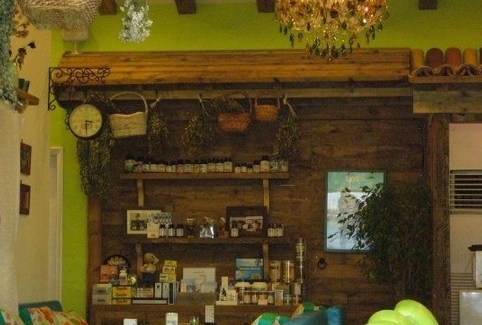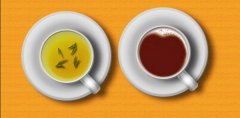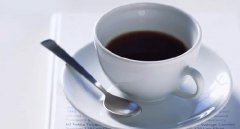Coffee part V History-Professional Coffee

Large multinational coffee companies are purely focused on coffee, as a professional product can not be drunk casually, but also in the company this is a new department, "specialty coffee" has emerged in the coffee industry. Professional coffee is something new now, but the downside is that it takes coffee out of its rightful place. Pure Yikalama coffee beans are roasted for a certain period of time to give full play to all their characteristics and flavors.
There is still good coffee available in the Dark Ages of coffee, of course if you know where to find it. Many small cafes continue to trade in shops, purchasing high-quality roasted Arabica coffee beans. The commercial operations of these outlets are mainly frequented by immigrants (usually Arabs, Turks, Greeks and Italians).
In the 1960s, all this began to change. As the baby boomers entered adulthood after World War II. Many people of this generation are no longer keen to follow in their parents' footsteps and prefer to act in a more bohemian way. For them, these cafes and shops are ideal places to meet, where they can read poems or talk about experience and culture.
There is such a cafe at Berkeley in California, which enjoys a high reputation in the professional coffee industry and brings a lot of inspiration to the coffee industry. Peter's coffee and tea shop was opened by Alfred Pitt in 1966. He is also known as the "grandfather of special coffee" and has produced a group of enthusiastic customers here. Peter, 35, who moved to California from the Netherlands, pioneered the use of craftsman's coffee roasting techniques to develop a unique style of roasting coffee from his coffee and tea business, as well as building a loyal customer base. People love Peter's coffee style so much that they even have their own fans.
Two of Pitt's most important clients are a couple from Seattle named Jerry Baldwin and Gordon Buck. In 1971, Pitt's coffee making became more and more mature, which inspired him to open a Starbucks bakery in Seattle. Relying on mature coffee technology, Starbucks gradually built up a loyal customer base in the 1970s and early 1980s.
Starbucks
In 1984, the director of retail operations and marketing (Howard Schultz) tried to persuade Baldwin and Buck to open the first Starbucks Cafe. Schultz went to Milan, where he found cafes in almost every area. Here, people drink coffee not only in the cafe, but also in the venue. Schultz wanted to build a cafe in the United States, but Baldwin and Buck rejected Schultz's plan because they didn't want to enter the restaurant industry.
Deviate to Tiger Mountain
In 1985, Schultz left Starbucks to open his own cafe. "Il strives to live up to it." Still using coffee drinks made from Starbucks beans, Earl strives to live up to Seattle residents who have proved very popular. So in fact, in 1987, Schultz could buy it from Buck and Schultz's Starbucks. Striving to live up to the name Starbucks, Schultz expanded rapidly, opening 1000 stores within a decade.
The story of the earliest professional cafe in Britain also involves Alfred Pitt. In 1995, Scott and his ally Swinson wanted to open a coffee shop in London, but they mainly studied marketing and design, and even though they were both from Seattle, they knew nothing about coffee. So they chose to study coffee in the Coffee League, and then Stephen and Jeremy both fell in love with coffee. Before returning home, they decided to open their own roasted coffee beans and start an export business.
The Covent Garden Cafe, opened by the Seattle Coffee Company, has been a great success and continues to expand. The rapid growth of many companies has led to an increasing demand for coffee roasting in the alliance, so the two companies decided to merge. Starbucks officially joined them in 1998 after opening 60 stores in the UK.
By this time, the cafe was already very popular. There are cafes on almost every English street. In other words: coffee, cappuccino and latte are commonplace. In fact, the price of latte is now one of the products used by the British government to measure inflation. Coffee shop in the UK, in the 1990s, people's consumption landscape thought that the coffee shop represented a place to relax. They encourage users to come to cafes to sit and chat, sit on comfortable sofas to relax, and read newspapers.
The existence of these cafes has continuously increased people's interest in coffee, and there are more and more forms of coffee. The supply channel of coffee machine accessories is also very perfect. There are more sources of coffee, and there are many different roasted coffee beans, so the Dark Coffee Age is over!
Important Notice :
前街咖啡 FrontStreet Coffee has moved to new addredd:
FrontStreet Coffee Address: 315,Donghua East Road,GuangZhou
Tel:020 38364473
- Prev

The story of tea and coffee in those years the relationship between coffee and tea
The original title: fall in love with Oriental Beauty Huang Yun, China Youth Daily (October 29, 2014) there are often jokes on the Internet, comparing tea and coffee to the East and the West; there are often some people in life, such as my father, complaining about his daughter through these two caffeinated drinks: I am a person who is used to drinking tea, unlike you.
- Next

How beautiful is American coffee?
American coffee English: Americano, a kind of coffee, is the most common coffee. It is made by using an Espresso coffee machine and has a light taste. American coffee is light and clear, almost transparent, and you can even see the brown coffee at the bottom of the cup. Americans drinking coffee with coffee is like playing a game without rules, laissez-faire and without taboos. Simple
Related
- Beginners will see the "Coffee pull flower" guide!
- What is the difference between ice blog purified milk and ordinary milk coffee?
- Why is the Philippines the largest producer of crops in Liberia?
- For coffee extraction, should the fine powder be retained?
- How does extracted espresso fill pressed powder? How much strength does it take to press the powder?
- How to make jasmine cold extract coffee? Is the jasmine + latte good?
- Will this little toy really make the coffee taste better? How does Lily Drip affect coffee extraction?
- Will the action of slapping the filter cup also affect coffee extraction?
- What's the difference between powder-to-water ratio and powder-to-liquid ratio?
- What is the Ethiopian local species? What does it have to do with Heirloom native species?

